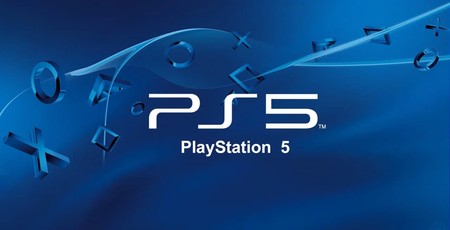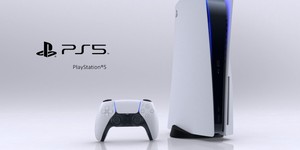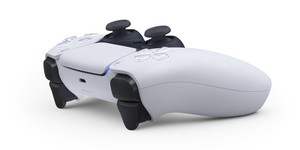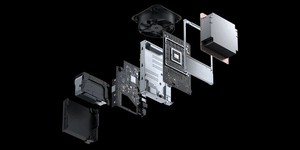
Mark Cerny, lead system architect of PlayStation 5, has delivered a presentation detailing the hardware specifications for the upcoming console and explaining the rationale behind the choices.
Coming just days after rival Microsoft revealed the specifications for its Xbox Series X console, the presentation had juicy details on the CPU, GPU, storage, and more - as you can see above. Like Microsoft, Sony has partnered with AMD in the design and production of the custom SoC that’s at the heart of PS5 – regardless of who wins the upcoming console war, AMD is the real winner. Here’s how the two compare:
| PlayStation 5 | Xbox Series X | |
|---|---|---|
| CPU | 8c/16t Zen 2, up to 3.5GHz (variable frequency) | 8c/16t Zen 2, 3.8GHz (3.6GHz with SMT) |
| GPU | 10.28 TFLOPs, 36 CUs at up to 2.23GHz (variable frequency) | 12 TFLOPs, 52 CUs at 1.825GHz |
| GPU Architecture | Custom RDNA 2 | Custom RDNA 2 |
| Memory/Interface | 16GB GDDR6/256-bit | 16GB GDDR6/320-bit |
| Memory Bandwidth | 448GB/s | 10GB at 560GB/s, 6GB at 336GB/s |
| Internal Storage | Custom 825GB SSD | 1TB Custom NVMe SSD |
| IO Throughput | 5.5GB/s (Raw), Typical 8-9GB/s (Compressed) | 2.4GB/s (Raw), 4.8GB/s (Compressed) |
| Expandable Storage | NVMe M.2 SSD Slot | 1TB Expansion cards |
| External Storage | USB HDD Support | USB 3.2 HDD Support |
| Optical Drive | 4K UHD Blu-ray Drive | 4K UHD Blu-ray Drive |
The 8c/16t Zen 2 processor was a known entity, but Cerny has now revealed the peak clock speed as 3.5GHz, giving Microsoft a little edge with its 3.6GHz-3.8GHz capabilities. Similarly, the GPU is less powerful on paper with 36 custom RDNA 2 Compute Units capped at 2.23GHz “only” equating to 10.28 TFLOPs compared to 12 TFLOPs on the significantly wider 52 CU GPU found on the Xbox Series X.
Knowing that comparisons like the above would be made and without directly referencing the Xbox, the architect nonetheless implied that wider and higher-TFLOP GPU designs were not necessarily the best option, as it’s harder to efficiently fill so many Compute Units with work. He also spoke about the advantage of having a higher-frequency GPU (which PS5 unsurprisingly does) i.e. that it increases the speed of all elements in the pipeline at once.
You may notice that we have described both the CPU and GPU clock speeds as ‘capped’. That’s because, as with modern PC components, the frequency of both processors is variable. While Cerny intimated that both components will spend most of their time at or near their peak speeds (pretty amazing considering it’s an AMD GPU at well over 2GHz), we do know that sustaining both won’t be possible within the PS5’s power and cooling limits.
Discussing how the exact frequency is decided, Cerny highlighted that it’s not done by temperature. After all, something critical to consoles is a consistent experience for all users, and this approach would quickly see those in hotter environments getting reduced performance – a familiar experience for PC gamers with poor airflow. Instead, the clocks are determined by workload, and the SoC can also leverage AMD’s new SmartShift technology (also a feature of the Ryzen Mobile 4000 Series) to dynamically allocate “spare” CPU power to the GPU (or vice versa, though that’s less likely in a gaming workload).
Unlike Zen 2 cores, which are familiar for PC enthusiasts by now, the RDNA 2 GPU architecture that both new consoles use is truly cutting edge and not available anywhere at present. The latest information points to a 2020 launch of Navi 2 graphics cards that are based on the architecture, but proper details are still scarce. What we do know is that RDNA 2 Compute Units will bring new features, most notably hardware-accelerated ray tracing, something both new consoles will support.
Moving to storage, Cerny began by reiterating the main benefits an SSD brings – something we’ve all known about for at least a decade. But Sony isn’t opting for an off-the-shelf SSD solution – far from it. Sony’s integrated SSD uses a custom 12-channel NAND flash controller, which leads to a ‘natural’ capacity of 825GB. The interface is four PCIe 4.0 lanes, and the SSD can transfer at 5.5GB/s, and the SoC has some nifty custom IO silicon (e.g. Kraken decompression) to assist in reducing bottlenecks in the journey from SSD to memory and ultimately reducing load times substantially and freeing up developers when designing game worlds.
Interestingly, users can expand their primary storage using a dedicated M.2 slot. While that means off-the-shelf M.2 drives can be added, it’s not just any. Sony requires M.2 drives to meet specifications that will allow them to work flawlessly with the PS5’s custom IO. Most notably, they need to be capable of reaching the 5.5GB/s transfer rate, which rules out any and all PCIe 3.0 x4 drives and means PCIe 4.0 x4 is a must. Sony will be testing SSDs to validate them for use in this way, and it’s likely that this will happen post-launch: ‘Please hold off on getting that M.2 drive until you hear from us,’ said Cerny. We also understand that older games can be run off of more standard forms of external storage.
Finally, the PS5 also has a new Tempest Engine for audio processing, capable of delivering hundreds of different sound sources with much greater quality than before. Digital Foundry has extra detail on this, stating that it ‘opens the door to a genuine revolution in game audio’. Sounds pretty exciting if you ask us!

MSI MPG Velox 100R Chassis Review
October 14 2021 | 15:04









Want to comment? Please log in.